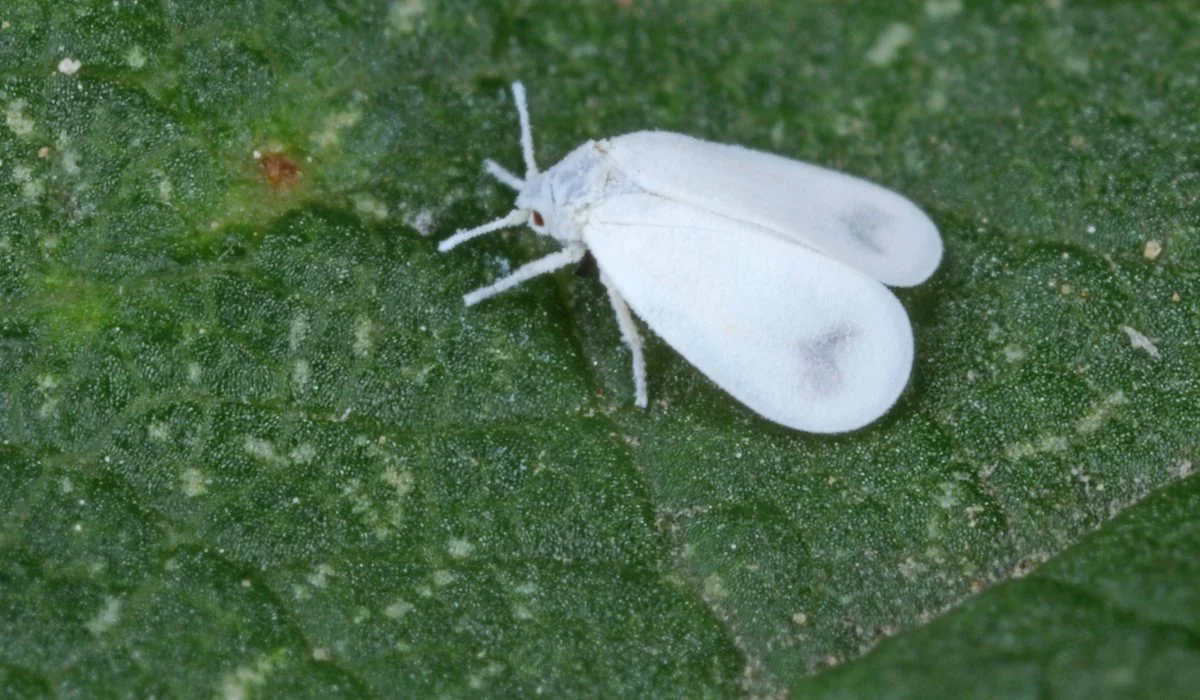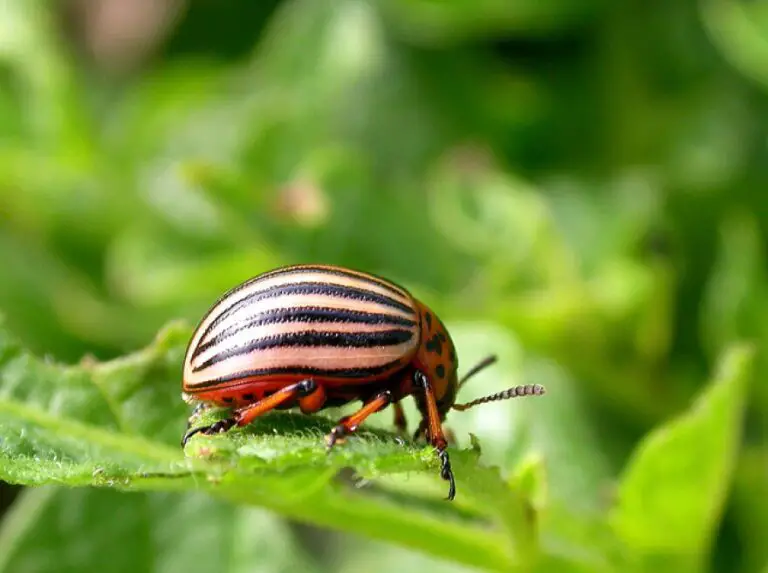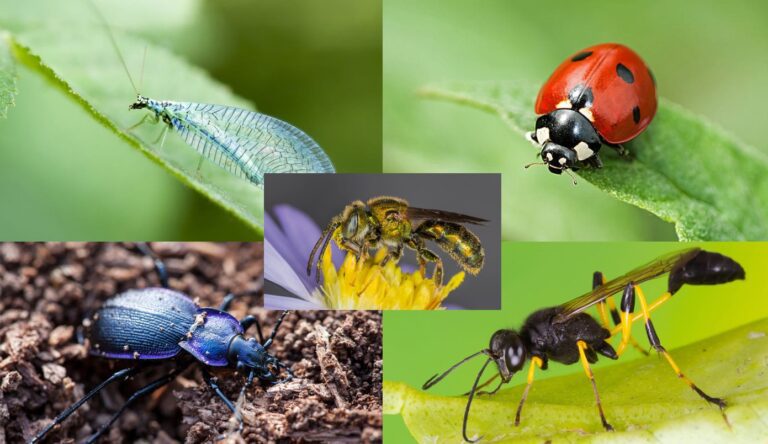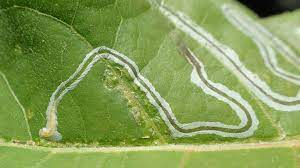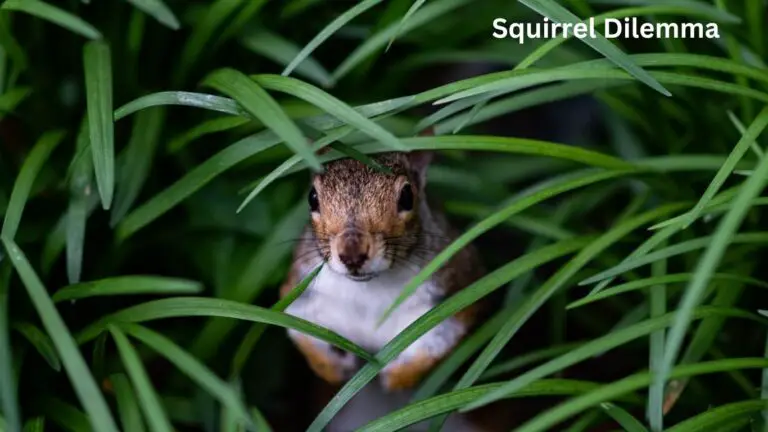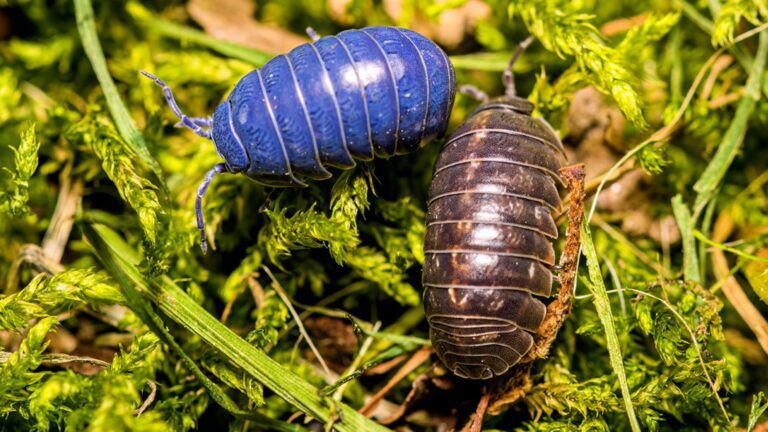Whiteflies: How to Eradicate These Tiny White Pests
Table of Contents
Understanding the Whitefly Infestation: Causes and Symptoms

Whitefly infestations can be a frustrating and troublesome problem for gardeners and farmers alike. Understanding the causes and symptoms of this pest invasion is crucial in order to effectively combat and prevent further damage.
There are several factors that can contribute to a whitefly infestation. One of the main causes is a warm and humid environment, which provides the perfect breeding ground for these tiny insects. Additionally, overwatering and poor air circulation can create conditions that favor whitefly populations. It is also worth noting that certain plants, such as tomatoes and beans, are more susceptible to whitefly infestations than others.
Identifying the symptoms of a whitefly infestation is essential for timely intervention. These pests are most commonly found on the underside of leaves, where they feed on plant sap. As a result, leaves may become discolored, with a yellowing or silvering appearance. In severe cases, the leaves may wilt and eventually die off. Furthermore, the presence of sticky honeydew, which is a sugary substance excreted by whiteflies, can attract ants and promote the growth of black sooty mold on plants.
Identifying the Types of Whiteflies and Their Damage
Whiteflies are small insects that belong to the family Aleyrodidae and are known for their delicate, powdery appearance. Despite their small size, these pests can cause significant damage to plants and crops. There are several types of whiteflies that can infest gardens and agricultural fields, each with its own specific characteristics and damage patterns.
One common type of whitefly is the greenhouse whitefly (Trialeurodes vaporariorum). These pests are a major concern for indoor gardens and greenhouses, as they thrive in warm and humid conditions. Greenhouse whiteflies can cause damage by sucking sap from plant leaves, leading to wilting, yellowing, and eventually, the death of the affected plants. Another type of whitefly is the sweet potato whitefly (Bemisia tabaci). This species is particularly challenging to control and can cause significant damage to a wide range of crops, including tomatoes, cotton, and melons.
The sweet potato whitefly is known for its ability to transmit plant viruses, making it a serious threat to agricultural production.
• Whiteflies are small insects that belong to the family Aleyrodidae.
• They have a delicate, powdery appearance.
• Despite their size, whiteflies can cause significant damage to plants and crops.
• There are several types of whiteflies that can infest gardens and agricultural fields.
• Each type has its own specific characteristics and damage patterns.
One common type of whitefly is the greenhouse whitefly (Trialeurodes vaporariorum).
– Greenhouse whiteflies thrive in warm and humid conditions.
– They are a major concern for indoor gardens and greenhouses.
– These pests suck sap from plant leaves, leading to wilting, yellowing, and eventually death of affected plants.
Another type of whitefly is the sweet potato whitefly (Bemisia tabaci).
– The sweet potato whitefly is particularly challenging to control.
– It can cause significant damage to various crops like tomatoes, cotton, and melons.
– This species is known for its ability to transmit plant viruses which poses a serious threat to agricultural production.
The Life Cycle of Whiteflies: From Eggs to Adults
Whiteflies undergo a fascinating life cycle, starting with eggs and progressing through four distinct stages before reaching adulthood. The entire process can take anywhere from two weeks to several months, depending on the environmental conditions and the species of whitefly.
The first stage in the life cycle is the egg stage. Female whiteflies lay their oval-shaped eggs on the underside of leaves, typically in clusters. These eggs are minute and difficult to spot without close inspection. The eggs hatch within a week, and tiny, wingless nymphs emerge. These nymphs then progress to the second stage, known as the crawler stage. During this phase, they crawl around the leaves in search of a suitable feeding site. Once they find a suitable spot, they insert their mouthparts into the plant tissue and begin to feed on sap.
The Impact of Whiteflies on Plants and Crops

Whiteflies pose a significant threat to plants and crops, causing detrimental impacts on their health and overall productivity. These tiny insects, often found in large numbers, feed on the sap of plants, extracting vital nutrients and weakening their ability to grow and thrive. As a result, infested plants experience stunted growth, yellowing of leaves, and wilting. The damage caused by whiteflies extends beyond the physical appearance of plants, as it can also lead to reduced yield and crop quality.
In addition to direct feeding, whiteflies also excrete a sticky substance known as honeydew, which creates an ideal environment for the growth of black sooty mold. This mold covers the leaves and stems of affected plants, inhibiting photosynthesis and further hindering their ability to obtain essential nutrients. Furthermore, whiteflies act as vectors for various plant diseases, transmitting viruses that can cause severe damage to crops. These diseases can result in reduced marketability and economic losses for farmers.
Understanding the impact of whiteflies on plants and crops is crucial in devising effective control and prevention strategies. By implementing appropriate measures, we can mitigate the detrimental effects of whitefly infestations and ensure the health and productivity of our green spaces and agricultural fields.
Cultural Control Methods: Prevention and Maintenance
Preventing and maintaining a whitefly infestation requires implementing effective cultural control methods. These methods focus on creating an unfavorable environment for whiteflies and promoting the health and resilience of plants. One of the key strategies is to maintain proper sanitation practices in your garden or greenhouse. Regularly remove and destroy any infested plant material, as it serves as a breeding ground for whiteflies. Pruning affected leaves and branches can also help reduce the population.
To prevent whitefly infestations, it is crucial to promote a balanced ecosystem in your garden. Encourage biodiversity by planting a variety of species that attract natural predators of whiteflies, such as ladybugs, lacewings, and parasitic wasps. These beneficial insects can help keep whiteflies under control. Additionally, practicing crop rotation can disrupt the whiteflies’ lifecycle and reduce their numbers. By alternating the planting locations of susceptible crops, you decrease the likelihood of carrying over whitefly populations from one season to another.
Implementing cultural control methods not only helps prevent whitefly infestations but also promotes the overall health and vitality of your plants. By following these practices, you create an environment that encourages beneficial insects, reduces pest populations, and minimizes the need for chemical interventions. Stay tuned for more effective strategies to combat whitefly infestations and ensure the success of your gardening endeavors.
Natural Predators: Encouraging Biological Control
Encouraging biological control through the use of natural predators is an effective and sustainable method to combat whitefly infestations in gardens and crops. By harnessing the power of nature, we can reduce reliance on chemical pesticides and promote a healthy balance in the ecosystem.
One of the most common natural predators of whiteflies is the ladybug, specifically the convergent lady beetle (Hippodamia convergens). Ladybugs are voracious feeders and a single adult can consume up to 50 whitefly eggs or larvae per day. Not only do they prey upon the whiteflies, but their presence alone can deter these pests from infesting plants. Incorporating ladybugs into your garden or crop system can be done by introducing them directly, by purchasing them from reputable suppliers, or by creating an inviting habitat for them to thrive. Providing ladybugs with a diverse range of plants that supply them with nectar, pollen, and alternate prey can attract and sustain these beneficial insects in your garden.
Introducing Beneficial Insects to Combat Whiteflies

Beneficial insects can be valuable allies in the fight against whitefly infestations. These natural predators feed on whiteflies at various stages of their life cycle, helping to reduce their population and prevent further damage to plants. By introducing these beneficial insects into your garden or greenhouse, you can create a balanced ecosystem that maintains whitefly populations at manageable levels.
One of the most effective beneficial insects for whitefly control is the ladybug, or more specifically, the adult ladybird beetle. Ladybugs are voracious predators of whiteflies and their eggs. A single ladybug can consume hundreds of whiteflies in a day, making them an invaluable asset in the battle against these pests. Other beneficial insects that can help control whiteflies include lacewing larvae, parasitic wasps, and predatory mites. These beneficial insects can be purchased from specialized suppliers or attracted to your garden by planting nectar-rich flowers and providing suitable habitats.
In addition to reducing whitefly populations, introducing beneficial insects offers a more sustainable and environmentally friendly approach to pest control. Unlike chemical insecticides, beneficial insects pose no harm to humans, pets, or the environment. By incorporating these natural predators into your pest management strategy, you can minimize the use of harmful chemicals and promote the long-term health and vitality of your plants. So, don’t overlook the potential of beneficial insects in combating whitefly infestations – they can be a powerful weapon in your gardening arsenal.
Organic Insecticides: Safe and Effective Solutions
Oftentimes, gardeners and farmers face the challenge of tackling insect infestations without using harmful chemicals. This is where organic insecticides come into play, offering safe and effective solutions for controlling pests like whiteflies. Organic insecticides are derived from natural sources such as plants, microbes, and minerals, and are considered a viable alternative to synthetic chemical insecticides.
One popular and widely used organic insecticide is neem oil, extracted from the seeds of the neem tree. Neem oil contains azadirachtin, a compound that disrupts the growth and development of insects, including whiteflies. It works by interfering with their feeding and reproductive system, ultimately reducing their population. Additionally, neem oil acts as a repellent, deterring whiteflies from infesting plants in the first place. Its effectiveness, coupled with its low toxicity to humans and beneficial insects, makes it an excellent choice for organic gardening. Other organic insecticides, such as insecticidal soaps and horticultural oils, also provide effective control against whiteflies while being gentle on the environment.
When using organic insecticides, it is important to follow the instructions provided by the manufacturer. Proper application techniques, such as timing and coverage, can greatly enhance their efficiency. Additionally, it is advisable to conduct a patch test on a small area of the plant before treating the entire infested area. This helps to ensure that the organic insecticide does not harm or cause any adverse effects on the plants. Remember, organic insecticides are part of an integrated pest management approach and should be used in conjunction with other control methods for comprehensive and sustainable whitefly management.
Chemical Control: When and How to Use Insecticides
Insecticides can be an effective tool for controlling whitefly infestations when used correctly. It is important, however, to understand when and how to apply these chemicals to ensure maximum efficacy and minimal harm to the environment. Timing is crucial when it comes to chemical control, as whiteflies are most vulnerable during specific stages of their life cycle.
The first step in using insecticides for whitefly control is identifying the appropriate stage at which to target these pests. For example, adult whiteflies are best controlled early in the morning or late in the evening when they are more active. On the other hand, targeting the nymph stage is more effective during midday when they are actively feeding. By timing the application carefully, you can increase the likelihood of success and minimize the need for repeat treatments.
When choosing an insecticide, it is important to consider both its effectiveness and its impact on the environment. Look for products that specifically target whiteflies and have been proven to be effective in controlling this pest. It is also essential to follow the instructions provided by the manufacturer, including dosage rates and safety precautions. Using higher-than-recommended doses can lead to resistance development and harm beneficial insects. Additionally, always wear protective gear, such as gloves and goggles, when handling and applying insecticides. By being cautious and responsible in your use of chemical control, you can effectively manage whitefly infestations while minimizing the potential risks.
Integrated Pest Management Strategies for Whitefly Control
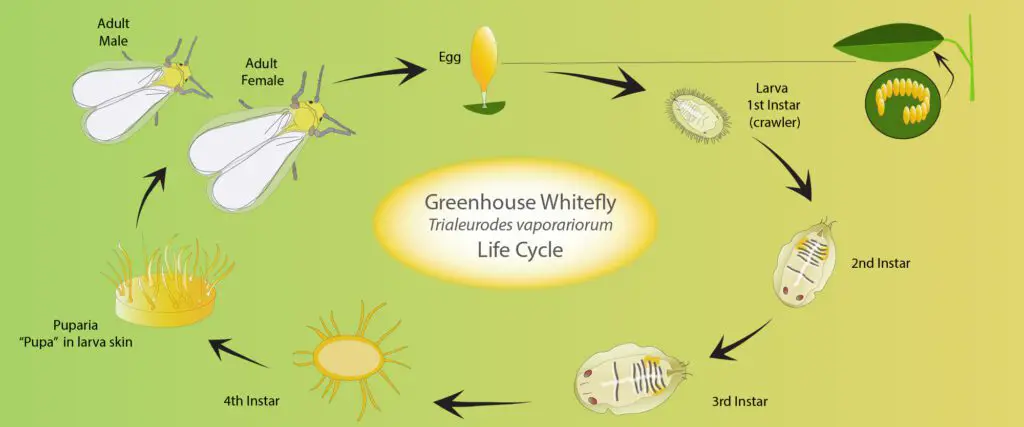
Integrated pest management (IPM) is a crucial approach for controlling whitefly populations and minimizing their impacts on plants and crops. By combining various techniques and strategies, gardeners and farmers can effectively manage whitefly infestations while minimizing the use of chemicals. One key component of IPM is the implementation of cultural control methods. These methods involve preventive measures and maintenance practices that create unfavorable conditions for whiteflies and limit their ability to reproduce and spread.
Proper sanitation practices, such as removing and destroying infested plant material, can significantly reduce whitefly populations. Additionally, regular inspection and monitoring of plants for early detection of whitefly presence allow for timely interventions. By promptly addressing small infestations, gardeners can prevent the exponential growth of whitefly populations. A clean and well-maintained garden environment, free of weeds and debris, can also discourage whiteflies and their associated problems. By adopting cultural control methods as part of an integrated pest management approach, gardeners can effectively manage whitefly populations while promoting the overall health and vitality of their plants and crops.
Monitoring and Early Detection Techniques
Monitoring and early detection techniques are crucial for effectively managing and preventing whitefly infestations in gardens and crops. By regularly monitoring plants for signs of whitefly activity, gardeners and farmers can take timely action to mitigate the potential damage. There are several methods that can be employed for effective monitoring and early detection.
Visual inspection is one of the primary methods for monitoring whitefly populations. Observing the undersides of leaves, particularly near the veins, can reveal the presence of adult whiteflies, nymphs, or their eggs. Look for tiny, yellowish-white insects with a distinct wing pattern or translucent eggs attached to the underside of leaves. Stunted growth, yellowing or wilting leaves, and the presence of sticky honeydew can also indicate whitefly activity. Additionally, the use of sticky traps can help in monitoring adult whiteflies, as they are attracted to the bright yellow color and get stuck on the adhesive surface. Regularly checking these traps can provide valuable insights into the population dynamics of whiteflies in the garden or field.
Physical Barriers: Using Nets and Screens to Protect Plants
When it comes to protecting your plants from whitefly infestations, physical barriers can be a highly effective method. Nets and screens provide a physical barrier that prevents whiteflies from reaching your plants, reducing the chances of infestation and minimizing the damage they can cause. These barriers work by creating a physical barrier that blocks the entry of whiteflies, while still allowing air and sunlight to reach your plants.
One of the key benefits of using nets and screens is that they offer a non-toxic and environmentally friendly solution to whitefly control. Unlike chemical pesticides, which can have negative effects on beneficial insects, plants, and the overall ecosystem, physical barriers pose no harm to the environment or the plants themselves. Additionally, using nets and screens can also help protect against other pests such as aphids, thrips, and other small insects that can harm your plants.
To effectively use nets and screens, it’s important to select the right material and size for your specific needs. Fine mesh nets and screens are commonly used to prevent whiteflies, as they have small enough holes to keep them out, yet still allow for proper airflow and light penetration. By properly securing the nets or screens around your plants, you can create a protective shield that keeps whiteflies at bay. Regular monitoring and maintenance are also important to ensure that there are no gaps or tears in the barriers that could allow whiteflies to enter.
Whitefly Control in Greenhouses and Indoor Gardens
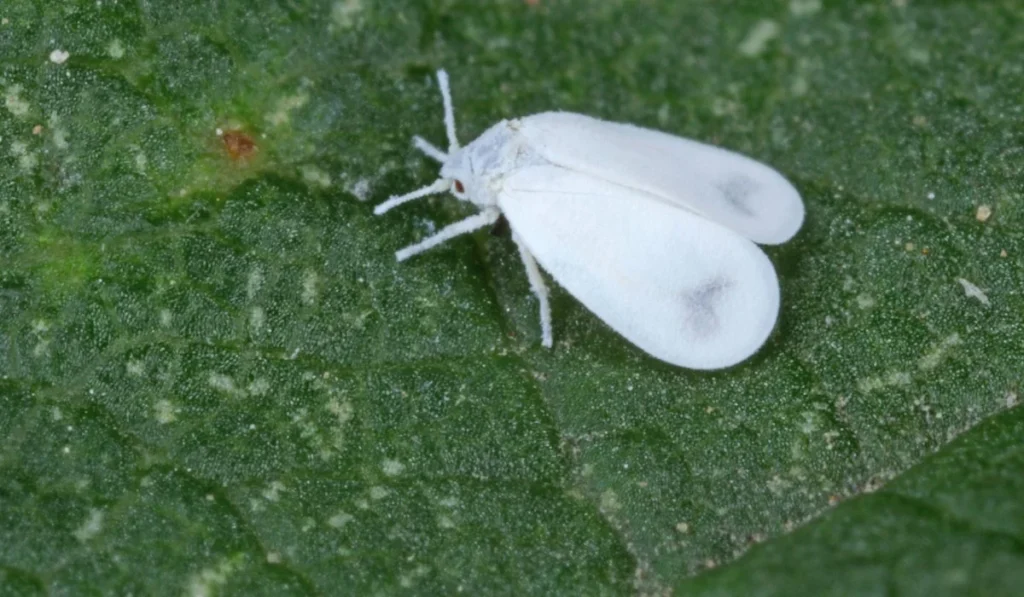
Greenhouses and indoor gardens provide controlled environments for plants to thrive, but they are not immune to whitefly infestations. These tiny insects can quickly multiply and wreak havoc on your plants if left unchecked. Fortunately, there are effective strategies you can implement to control and prevent whitefly infestations in these enclosed spaces.
One of the first steps in whitefly control in greenhouses and indoor gardens is implementing proper sanitation measures. Regularly clean and remove debris from your growing areas, as whiteflies are attracted to decaying plant matter. Additionally, removing weeds and other potential host plants from the vicinity can help minimize the risk of infestation.
Furthermore, introducing beneficial insects can be an effective natural solution for controlling whiteflies. Predatory insects such as ladybugs and lacewings feed on whiteflies and can help maintain their population at manageable levels. You can purchase these beneficial insects from reputable suppliers and release them in your greenhouse or indoor garden. However, it’s important to ensure that the beneficial insects are compatible with the plants you are growing and that their release is timed appropriately for maximum effectiveness.
In conclusion, whitefly control in greenhouses and indoor gardens requires a multi-pronged approach that includes proper sanitation practices and the introduction of beneficial insects. By implementing these strategies, you can keep whitefly populations under control and ensure the health and productivity of your plants in these controlled environments.
Here’s a table summarizing strategies to eradicate whiteflies:
| Strategy | Description |
|---|---|
| 1. Cultural Control | – Yellow Sticky Traps: Place yellow sticky traps to attract and capture adult whiteflies. |
| – Pruning: Remove heavily infested leaves or plants to reduce the population. | |
| 2. Natural Predators | – Ladybugs: Introduce ladybugs, a natural predator of whiteflies, to the affected area. |
| – Parasitic Wasps: Release parasitic wasps that lay eggs on whitefly nymphs, controlling their population. | |
| 3. Neem Oil and Insecticidal Soap | – Neem Oil: Spray neem oil on affected plants. It disrupts the life cycle of whiteflies and repels them. |
| – Insecticidal Soap: Use insecticidal soap to suffocate and kill whiteflies. Follow application instructions carefully. | |
| 4. Horticultural Oils | – White Oil: Apply horticultural oils, such as white oil, to coat and smother whitefly eggs and nymphs. |
| 5. Chemical Insecticides | – Pyrethroids: Use pyrethroid-based insecticides, but exercise caution to minimize harm to beneficial insects and the environment. |
| – Systemic Insecticides: Apply systemic insecticides that are absorbed by plants, targeting whiteflies when they feed on sap. | |
| 6. Companion Planting | – Marigolds: Plant marigolds as a companion, as they can deter whiteflies with their natural repellent properties. |
| 7. Reflective Mulch | – Aluminum or Silver Mulch: Reflective mulch can disorient whiteflies, reducing their attraction to plants. |
| 8. Biological Control Agents | – Beauveria bassiana: Apply this beneficial fungus, which infects and kills whiteflies. |
| 9. Systematic Plant Inspection | – Regularly inspect plants for early signs of infestation, allowing for prompt intervention and control measures. |
| Done |
Long-Term Management and Prevention Tips for Whitefly Infestations
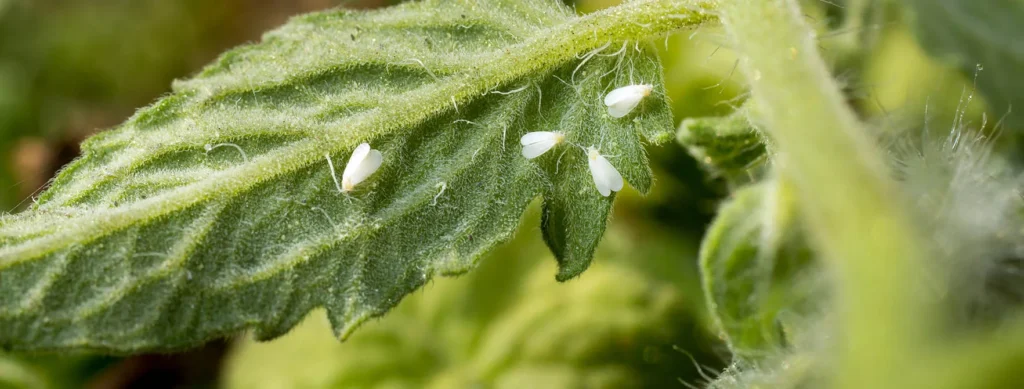
To effectively manage and prevent whitefly infestations in the long term, there are several key practices that gardening enthusiasts should keep in mind. First and foremost, maintaining a healthy garden environment is crucial. Providing plants with proper nutrition, adequate watering, and optimal growing conditions will help them to resist infestations and recover more quickly if an infestation does occur.
Regular monitoring of plants is essential for early detection of whitefly populations. By regularly inspecting the undersides of leaves and monitoring for signs of infestation, such as sticky honeydew, sooty mold, or the presence of adult whiteflies, gardeners can take swift action before the infestation becomes severe. Pruning affected foliage and disposing of it properly can help to reduce the population and prevent the spread of whiteflies to other plants.
Another important aspect of long-term whitefly management is practicing good hygiene in the garden. This includes removing any debris or weeds that may harbor whitefly eggs or nymphs, as well as regularly cleaning and disinfecting tools and equipment to prevent the transmission of pests. Additionally, it is advisable to rotate crops and avoid planting susceptible plants in the same area year after year, as this can help disrupt the lifecycle of the whiteflies and reduce the chances of reinfestation.
By employing these long-term management and prevention tips, gardeners can effectively minimize the impact of whitefly infestations on their plants and crops. However, it’s important to note that whiteflies can be persistent pests, so a multi-faceted approach that combines cultural controls, biological controls, and appropriate insecticide use may be necessary in severe cases. Consulting with local agricultural extension services or expert horticulturists can provide valuable guidance on the best strategies for managing whitefly infestations in specific regions or environments.
How do whiteflies cause damage to plants and crops?
Whiteflies damage plants by sucking the sap from the leaves, which weakens the plants and can cause wilting, stunted growth, and yellowing of the leaves.
What are some cultural control methods to prevent whitefly infestations?
Cultural control methods include practicing good sanitation by removing and destroying infested plant parts, using reflective mulches, and maintaining proper plant nutrition and moisture levels.
Are there any natural predators that can help control whitefly populations?
Yes, there are natural predators of whiteflies such as ladybugs, lacewings, and parasitic wasps that can help control their populations by feeding on the whitefly eggs, larvae, and adults.
How can I encourage the presence of beneficial insects to combat whiteflies?
You can attract beneficial insects by planting nectar-rich flowers, providing shelter and water sources, reducing the use of insecticides, and creating a diverse and balanced garden ecosystem.
Are there any safe and effective organic insecticides for whitefly control?
Yes, there are organic insecticides available that are formulated with natural ingredients such as neem oil, insecticidal soaps, and botanical extracts, which can effectively control whiteflies without harming beneficial insects.
When should I consider using chemical control methods for whitefly infestations?
Chemical control should be considered as a last resort when other methods have failed or when the infestation is severe and causing significant damage to the plants or crops.
What is integrated pest management (IPM) and how can it be used for whitefly control?
Integrated pest management is an approach that combines various control methods, such as cultural, biological, and chemical, to manage pests like whiteflies in a sustainable and environmentally friendly manner.
How can I monitor and detect whiteflies early on to prevent infestations?
Regularly inspecting plants for signs of whitefly infestation, such as sticky honeydew, whitefly adults, nymphs, or their eggs, can help in early detection and prompt action to prevent further spread.
Can physical barriers like nets and screens be effective in protecting plants from whiteflies?
Yes, using nets or screens can create a physical barrier that prevents whiteflies from reaching the plants and laying eggs, thus reducing the risk of infestation.
How can I effectively manage and prevent whitefly infestations in greenhouses and indoor gardens?
To manage whiteflies in greenhouses and indoor gardens, it is important to regularly inspect and clean the plants, maintain proper ventilation, use sticky traps, and consider biological control methods, such as introducing beneficial insects.

